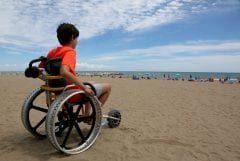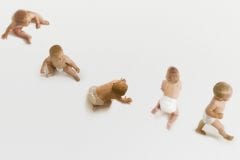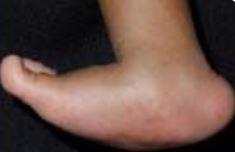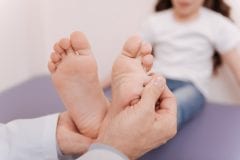 Communicating with our children can be a difficult task at times. We feel like they’re not listening to us; they feel like we’re not listening to them. Good listening and communications skills are essential to successful parenting. Your child’s feelings, views and opinions have worth, and you should make sure you take the time to sit down and listen openly and discuss them honestly. It seems to be a natural tendency to react rather than to respond. We pass judgment based on our own feelings and experiences. However, responding means being receptive to our child’s feelings and emotions and allowing them to express themselves openly and honestly without fear of repercussion from us. By reacting, we send our child the message that their feelings and opinions are invalid. But by responding and asking questions about why the child feels that way, it opens a dialog that allows them to discuss their feelings further, and allows you a better understanding of where they’re coming from. Responding also gives you an opportunity to work out a solution or a plan of action with your child that perhaps they would not have come up with on their own. Your child will also appreciate […] read more
Communicating with our children can be a difficult task at times. We feel like they’re not listening to us; they feel like we’re not listening to them. Good listening and communications skills are essential to successful parenting. Your child’s feelings, views and opinions have worth, and you should make sure you take the time to sit down and listen openly and discuss them honestly. It seems to be a natural tendency to react rather than to respond. We pass judgment based on our own feelings and experiences. However, responding means being receptive to our child’s feelings and emotions and allowing them to express themselves openly and honestly without fear of repercussion from us. By reacting, we send our child the message that their feelings and opinions are invalid. But by responding and asking questions about why the child feels that way, it opens a dialog that allows them to discuss their feelings further, and allows you a better understanding of where they’re coming from. Responding also gives you an opportunity to work out a solution or a plan of action with your child that perhaps they would not have come up with on their own. Your child will also appreciate […] read more
Last Updated:
June 4, 2025
How to actively listen to your child
 Communicating with our children can be a difficult task at times. We feel like they’re not listening to us; they feel like we’re not listening to them. Good listening and communications skills are essential to successful parenting. Your child’s feelings, views and opinions have worth, and you should make sure you take the time to sit down and listen openly and discuss them honestly. It seems to be a natural tendency to react rather than to respond. We pass judgment based on our own feelings and experiences. However, responding means being receptive to our child’s feelings and emotions and allowing them to express themselves openly and honestly without fear of repercussion from us. By reacting, we send our child the message that their feelings and opinions are invalid. But by responding and asking questions about why the child feels that way, it opens a dialog that allows them to discuss their feelings further, and allows you a better understanding of where they’re coming from. Responding also gives you an opportunity to work out a solution or a plan of action with your child that perhaps they would not have come up with on their own. Your child will also appreciate […] read more
Communicating with our children can be a difficult task at times. We feel like they’re not listening to us; they feel like we’re not listening to them. Good listening and communications skills are essential to successful parenting. Your child’s feelings, views and opinions have worth, and you should make sure you take the time to sit down and listen openly and discuss them honestly. It seems to be a natural tendency to react rather than to respond. We pass judgment based on our own feelings and experiences. However, responding means being receptive to our child’s feelings and emotions and allowing them to express themselves openly and honestly without fear of repercussion from us. By reacting, we send our child the message that their feelings and opinions are invalid. But by responding and asking questions about why the child feels that way, it opens a dialog that allows them to discuss their feelings further, and allows you a better understanding of where they’re coming from. Responding also gives you an opportunity to work out a solution or a plan of action with your child that perhaps they would not have come up with on their own. Your child will also appreciate […] read more
Foot Problems in Children
 An glaring cliché that children are not just little grown ups. The growing child has growing bones and other body systems that mean that the nature of clinical problems that children have are generally exclusive to children and aren’t like the problems you would most likely expect in a smaller grownup. Because the child is growing, there are particular conditions associated with that. The developing tissues have a propensity to be damaged if they’re subject to injury. The foot is one a part of the body that’s not only developing in the youngster, it is also susceptible to potential injury and also trauma as well as force through the shoes, so there is lot that may go wrong with the feet. On the list of issues for treating foot conditions in youngsters (and a lot of other conditions in kids seen by health care professionals) is figuring out what is abnormal and what’s a part of normal growth. Within podiatry, an illustration of this dilemma is that of flat foot. A flat foot is a part of the normal growth and development of the child therefore it can be difficult to determine when the flat foot is something not necessarily […] read more
An glaring cliché that children are not just little grown ups. The growing child has growing bones and other body systems that mean that the nature of clinical problems that children have are generally exclusive to children and aren’t like the problems you would most likely expect in a smaller grownup. Because the child is growing, there are particular conditions associated with that. The developing tissues have a propensity to be damaged if they’re subject to injury. The foot is one a part of the body that’s not only developing in the youngster, it is also susceptible to potential injury and also trauma as well as force through the shoes, so there is lot that may go wrong with the feet. On the list of issues for treating foot conditions in youngsters (and a lot of other conditions in kids seen by health care professionals) is figuring out what is abnormal and what’s a part of normal growth. Within podiatry, an illustration of this dilemma is that of flat foot. A flat foot is a part of the normal growth and development of the child therefore it can be difficult to determine when the flat foot is something not necessarily […] read more
Duchenne muscular dystrophy
 Duchenne muscular dystrophy (DMD for short) is a genetic problem that is characterized by a gradual muscle deterioration and the development of weakness because of the differences to a protein called dystrophin that is needed to maintain muscle cells intact. Duchenne muscular dystrophy was first explained by the French neurologist Guillaume Benjamin Amand Duchenne back in1860. Duchenne muscular dystrophy is one kind of several conditions in a group called the dystrophinopathies which also includes Becker Muscular dystrophy. The beginning of DMD symptoms is frequently in early childhood. The condition mainly affects males, however females are affected on rare occasions. The occurrence of DMD is about 6 per 100,000 individuals. The key characteristic of Duchenne muscular dystrophy is muscle weakness that may start off as early as ages 2 or 3. The weakness to begin with actually starts to impact the proximal muscle groups that are the muscles that are nearer to the core of the body. It is not until later on when the more distal limb muscles will be affected. Generally, the lower limb muscle groups will be affected before the upper limb muscle groups. The affected child commonly presents with having trouble leaping, running, as well as walking. […] read more
Duchenne muscular dystrophy (DMD for short) is a genetic problem that is characterized by a gradual muscle deterioration and the development of weakness because of the differences to a protein called dystrophin that is needed to maintain muscle cells intact. Duchenne muscular dystrophy was first explained by the French neurologist Guillaume Benjamin Amand Duchenne back in1860. Duchenne muscular dystrophy is one kind of several conditions in a group called the dystrophinopathies which also includes Becker Muscular dystrophy. The beginning of DMD symptoms is frequently in early childhood. The condition mainly affects males, however females are affected on rare occasions. The occurrence of DMD is about 6 per 100,000 individuals. The key characteristic of Duchenne muscular dystrophy is muscle weakness that may start off as early as ages 2 or 3. The weakness to begin with actually starts to impact the proximal muscle groups that are the muscles that are nearer to the core of the body. It is not until later on when the more distal limb muscles will be affected. Generally, the lower limb muscle groups will be affected before the upper limb muscle groups. The affected child commonly presents with having trouble leaping, running, as well as walking. […] read more
What is Developmental Coordination Disorder?
 Development and growth in young children follows a traditional sequence and they ordinarily develop the ability to sit up, stand, walk, and talk at expected ages with a particular range of typical variation. Developmental coordination disorder (abbreviated as DCD) is among one of many problems that could result in a delay in reaching these key events. Developmental coordination disorder is a lack of co-ordination between just what the mind intends and the capability to get the body to carry out those purposes. For example, the mind could suggest “I need to tie my shoe laces.” For unknown purposes, the brain just isn’t going to appropriately send the directions for shoe lace tying towards the hands and feet. The mind knows how to tie footwear, however the hands basically can’t continue with the mind’s instructions. This is just what also happens when you attempt to run, hop, write, button a shirt, and a lot of other activities. Those that have DCD frequently have normal intelligence. DCD might be referred to as “clumsy child syndrome”. Signs and symptoms of developmental coordination disorder can take place soon after birth with problems figuring out how to suck and also take milk. In toddlers it […] read more
Development and growth in young children follows a traditional sequence and they ordinarily develop the ability to sit up, stand, walk, and talk at expected ages with a particular range of typical variation. Developmental coordination disorder (abbreviated as DCD) is among one of many problems that could result in a delay in reaching these key events. Developmental coordination disorder is a lack of co-ordination between just what the mind intends and the capability to get the body to carry out those purposes. For example, the mind could suggest “I need to tie my shoe laces.” For unknown purposes, the brain just isn’t going to appropriately send the directions for shoe lace tying towards the hands and feet. The mind knows how to tie footwear, however the hands basically can’t continue with the mind’s instructions. This is just what also happens when you attempt to run, hop, write, button a shirt, and a lot of other activities. Those that have DCD frequently have normal intelligence. DCD might be referred to as “clumsy child syndrome”. Signs and symptoms of developmental coordination disorder can take place soon after birth with problems figuring out how to suck and also take milk. In toddlers it […] read more
What is a congenital vertical talus?
 A vertical talus or a congenital vertical talus is a infrequent disability of the foot which is typically present at birth. It’s an severe kind of flat foot that can impact one or both feet. The talus is small bone inside the rearfoot that points forwards in a horizontal direction and sits amongst the tibia and fibula bones of the leg and the calcaneus bone to make the ankle joint structure. With a foot with congenital vertical talus, the talus bone points towards the floor in a vertical posture. The implications with this can be a stiff and rigid foot with no arch that is frequently termed as a rocker bottom foot. The issue can arise on it’s own or may be a part of a bigger syndrome including arthrogryposis or spina bifida. There’s also a less serious form of this problem called oblique talus which is midway between the horizontal and vertical forms of the talus. This type is a lot more flexible and only shows up when weightbearing. A congenital vertical talus is usually recognized at birth, however it can occasionally be discovered with ultrasound examination in the pregnancy. An examination of the foot will probably show the […] read more
A vertical talus or a congenital vertical talus is a infrequent disability of the foot which is typically present at birth. It’s an severe kind of flat foot that can impact one or both feet. The talus is small bone inside the rearfoot that points forwards in a horizontal direction and sits amongst the tibia and fibula bones of the leg and the calcaneus bone to make the ankle joint structure. With a foot with congenital vertical talus, the talus bone points towards the floor in a vertical posture. The implications with this can be a stiff and rigid foot with no arch that is frequently termed as a rocker bottom foot. The issue can arise on it’s own or may be a part of a bigger syndrome including arthrogryposis or spina bifida. There’s also a less serious form of this problem called oblique talus which is midway between the horizontal and vertical forms of the talus. This type is a lot more flexible and only shows up when weightbearing. A congenital vertical talus is usually recognized at birth, however it can occasionally be discovered with ultrasound examination in the pregnancy. An examination of the foot will probably show the […] read more
What is clubfoot?
 Clubfoot is a disability of the foot that is generally identified during birth. The phrase clubfoot represents several different kinds of foot deformity, with the most common being what is known as a talipes equino varus. In this disability the foot is directed straight down and inwards. A clubfoot can impact only 1 or both feet. It takes place close to 1-2 in a thousand live births making it a relatively prevalent problem at birth. The healthcare and nursing staff routinely have a check list of stuff that they search for or carefully consider at birth and clubfoot is just one of those. The condition can just be an isolated deformity of just one or both feet or it can be a part of a genetic condition or syndrome which is associated with a variety of other problems. It can also be of a flexible type or rigid kind, depending on how mobile the foot is. A flexible kind is a lot more amenable to therapy. The main cause of clubfoot is not totally clear. There’s a genetic component as it could be a part of a hereditary syndrome. The commonest form of clubfoot can resemble the positioning of the […] read more
Clubfoot is a disability of the foot that is generally identified during birth. The phrase clubfoot represents several different kinds of foot deformity, with the most common being what is known as a talipes equino varus. In this disability the foot is directed straight down and inwards. A clubfoot can impact only 1 or both feet. It takes place close to 1-2 in a thousand live births making it a relatively prevalent problem at birth. The healthcare and nursing staff routinely have a check list of stuff that they search for or carefully consider at birth and clubfoot is just one of those. The condition can just be an isolated deformity of just one or both feet or it can be a part of a genetic condition or syndrome which is associated with a variety of other problems. It can also be of a flexible type or rigid kind, depending on how mobile the foot is. A flexible kind is a lot more amenable to therapy. The main cause of clubfoot is not totally clear. There’s a genetic component as it could be a part of a hereditary syndrome. The commonest form of clubfoot can resemble the positioning of the […] read more
Problems with the Growing Bones in Children
 The growing bones in youngsters are susceptible to injury when an excessive amount of strain is put on them too quickly and the bones are usually not provided adequate time to adapt to those loads. Generally in the ends of each bone are cartilage growth regions which growth happens at. It is this much softer cartilage area that is at risk from damage. Problems with these growth areas tend to be more frequent in children that happen to be more active or have a higher body weight. Every one of these conditions improve by themselves once growth in the bone is completed and that cartilage growth area combines along with the rest of the bone. Osgood-Schlatter Disease: This is the growth injury in front and top of the lower leg bone just beneath the patella. It occurs where the tendon from your patella inserts into the tibia bone. The insertion of the tendon could become swollen, tender along with a small hard swelling can appear. It is frequently quite painful on activity and particularly when ascending stairs. The treatment of Osgood-Schlatter Disease is often using a reduction of activity to within pain degrees and the use of ice immediately after […] read more
The growing bones in youngsters are susceptible to injury when an excessive amount of strain is put on them too quickly and the bones are usually not provided adequate time to adapt to those loads. Generally in the ends of each bone are cartilage growth regions which growth happens at. It is this much softer cartilage area that is at risk from damage. Problems with these growth areas tend to be more frequent in children that happen to be more active or have a higher body weight. Every one of these conditions improve by themselves once growth in the bone is completed and that cartilage growth area combines along with the rest of the bone. Osgood-Schlatter Disease: This is the growth injury in front and top of the lower leg bone just beneath the patella. It occurs where the tendon from your patella inserts into the tibia bone. The insertion of the tendon could become swollen, tender along with a small hard swelling can appear. It is frequently quite painful on activity and particularly when ascending stairs. The treatment of Osgood-Schlatter Disease is often using a reduction of activity to within pain degrees and the use of ice immediately after […] read more
Heel Pain in Children is Most Likely Due to Sever’s Disease
 The most prevalent cause of heel pain in adults is a problem known as plantar fasciitis that make up to 90% of the cases. In regards to kids, plantar fasciitis is really rather uncommon and the most frequent explanation for heel pain in kids being a problem referred to as Sever’s Disease. This is really bad words since it’s not a disease and the use of that phrase can certainly have pretty undesirable consequences. There’s also a trend away from the using descriptions of disorders from staying called after individuals, usually the physician which first detailed the ailment. The more suitable term for the problem is actually calcaneal apophysitis. It is a problem with the growing cartilage area at the back of the calcaneus or heel bone. When we come into this world, the majority of the bones will still be a soft and pliable cartilage framework which the bone grows within. For the calcaneus growth begins in the center and extends to take up the full area of that cartilage material scaffold. Nevertheless, there does exist still a cartilage material growth area in the back of the heel bone which growth and development will continue to happen from. That […] read more
The most prevalent cause of heel pain in adults is a problem known as plantar fasciitis that make up to 90% of the cases. In regards to kids, plantar fasciitis is really rather uncommon and the most frequent explanation for heel pain in kids being a problem referred to as Sever’s Disease. This is really bad words since it’s not a disease and the use of that phrase can certainly have pretty undesirable consequences. There’s also a trend away from the using descriptions of disorders from staying called after individuals, usually the physician which first detailed the ailment. The more suitable term for the problem is actually calcaneal apophysitis. It is a problem with the growing cartilage area at the back of the calcaneus or heel bone. When we come into this world, the majority of the bones will still be a soft and pliable cartilage framework which the bone grows within. For the calcaneus growth begins in the center and extends to take up the full area of that cartilage material scaffold. Nevertheless, there does exist still a cartilage material growth area in the back of the heel bone which growth and development will continue to happen from. That […] read more